Origin, distribution, and characteristics of the barbados cherry tree.
Is a barbados cherry and jamaican cherry the same?
Barbados cherry and its vitamin C content.
Sweets, wines, and soft drinks: how to prepare it in the kitchen.
Care needed for a barbados cherry plant.
A few days ago, I was talking with a Puerto Rican friend about the fruits I have in my yard, and as we approached a small acerola tree I have in a pot in my garden, he said to me:
-Did you know that in the second half of the last century, the government of Puerto Rico encouraged the planting of this tree in homes and schools to increase vitamin C consumption?
I already knew that the barbados cherry has one of the highest contents of this vitamin, but I had never heard about the initiative by the Puerto Rican government.
Today, almost a week later and with the idea lingering in my mind, I started thinking that it would be very interesting to share a bit more about this tree and its fruit with you.
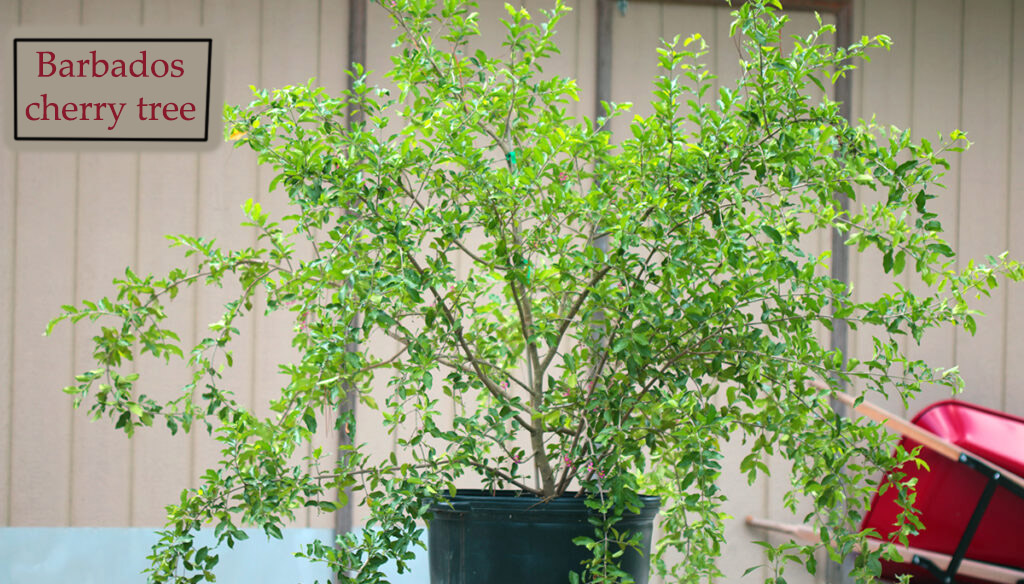
Origin, distribution, and characteristics of the Barbados cherry tree.
Barbados cherry (Malpighia emarginata), also known as west indian cherry, cherry, semeruco, seriz for Haitians, and acerola in Spanish speaking countries, is a shrub or small tree that can reach up to 20 feet (6 meters) in height and may have a trunk diameter of 4 inches.
Native to the Americas, its original habitat extends from Brazil to the Lesser Antilles, but due to its properties, its cultivation spread to several countries, and today it is easily found naturalized in Cuba, Jamaica, and Puerto Rico, just to name a few places.
Is a barbados cherry and jamaican cherry the same?
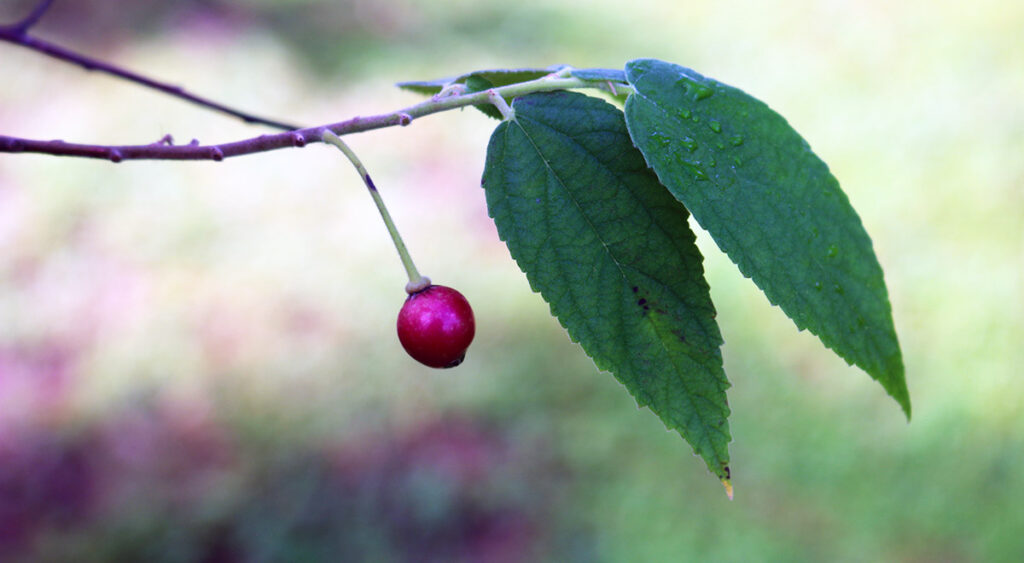
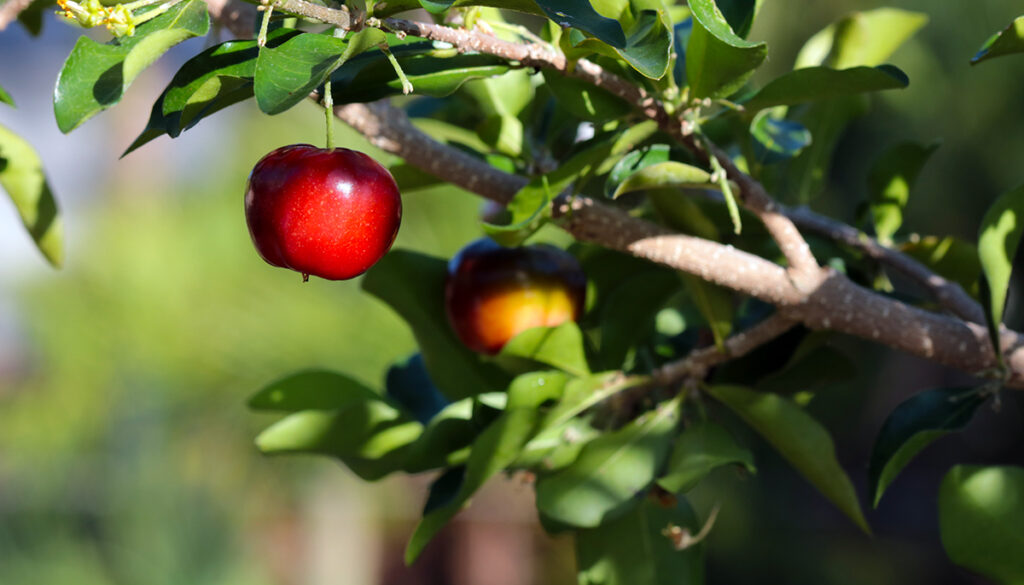
No, the barbados cherry (Malpighia emarginata) and the Jamaican cherry (Muntingia calabura) are not the same fruit. They are two distinct fruits from different plant families with different characteristics.
- Barbados Cherry:
- Scientific Name: Malpighia emarginata
- Other Names: Acerola, West Indian cherry
- Family: Malpighiaceae
- Characteristics: Small fruit, bright red in color, very high in vitamin C, often used in juices and supplements.
- Jamaican Cherry:
- Scientific Name: Muntingia calabura
- Other Names: Strawberry tree, Singapore cherry
- Family: Muntingiaceae
- Characteristics: Small fruit, ranging from red to yellowish in color, sweet flavor, often consumed fresh or used in jams and desserts
Visit this link to learn more about the Jamaican cherry.
Barbados cherry and its vitamin C content.
An interesting fact occurred around 1945 during a study conducted by the School of Medicine of Puerto Rico. While analyzing the nutritional properties of emblic (Emblica officinalis L), researchers discovered that it contained a high content of ascorbic acid. This discovery motivated one of the lab assistants to bring some Barbados cherries because he knew that residents often ate this fruit when they had colds.

The fruit of emblic.
The study revealed that Barbados cherry had a higher content of ascorbic acid, and when we add to this its attractive appearance when ripe and its exquisite flavor, it’s not hard to imagine why all the interest in emblic disappeared to make Barbados cherry the star of the moment.
The cultivation of Barbados cherry grew incredibly. From a plantation of 400 trees located in Río Piedras in 1947, it expanded to 30,000 trees spread across various commercial plantations in just 7 years. Outside of Puerto Rico, interest in the fruit also intensified, and its cultivation spread to several countries. The United States (Florida and Hawaii), Venezuela, Guatemala, Australia, among others, were places where Barbados cherry production became part of the economy.
All of this led to the creation of various products known as natural foods derived from the fruit and promoting vitamin C. This is how the market was flooded with acerola powders, pills, juices, and syrups.
However, the fame did not last long because soon producers began to realize that in terms of costs, it was very difficult to compete with synthetic vitamins. This led to the abandonment of most plantations.
While it’s true that commercial cultivation has decreased over time, interest among people like you and me who have or wish to have one of these little trees in our yard hasn’t diminished.
I believe that besides the beauty this plant adds to our garden, we shouldn’t forget it’s one of the fruits richest in vitamin C. Consider that each cherry contains roughly 80 mg, and knowing that the daily requirement for an adult is between 65 and 90 mg, it’s easy to see that by eating just one barbados cherry a day, we’re getting around 100% of our daily vitamin C intake.
Health benefits.
This fruit, besides its high vitamin C content, also contains other components that make it an excellent addition to our daily diet. Here are some of these benefits.
-It can help prevent cancer.
Several scientific studies suggest that people who consume enough vitamin C from fruits and vegetables are less likely to develop certain types of cancer, such as lung, colon, or breast cancer.
-Cardiovascular Diseases.
There is a relationship between a diet rich in vegetables and fruits and a lower risk of developing these types of diseases. Researchers believe that the antioxidants present play an important role in combating damage caused by free radicals, which is one of the main causes of cardiovascular problems.
-Macular Degeneration and Cataracts.
These two diseases are the leading causes of vision loss in older people.
Regarding macular degeneration, researchers do not believe that vitamin C and other antioxidants can prevent the development of the disease, but studies suggest that taking this vitamin along with other nutrients may slow down its progression.
As for cataracts, the relationship is not very clear, but it is thought that consuming vitamin C through fruits and vegetables may reduce the risk of developing them.
-Cold.
While it’s believed that taking vitamin C doesn’t prevent contracting this illness, there are increasing studies suggesting that this vitamin does influence shorter recovery times and less severe symptoms.
Keep in mind that the benefits are mainly derived from the high vitamin C content in the fruit. Additionally, although in lower concentrations, acerola also contains other vitamins and antioxidants that undoubtedly help you stay healthy.
Sweets, wines, and soft drinks: how to prepare it in the kitchen.
In the previous part, we talked about the benefits. Now I’ll give you some ideas of creations you can make with this fruit in the kitchen to make eating these cherries more enjoyable.
Alright, I almost forgot. Let me first explain how to eat Barbados cherries in their natural form. To do this, simply approach the tree and pick the ripe cherries, which are bright red on the outside. Rinse them with clean water and chew them. Inside, you’ll find three small, soft seeds, which you’ll spit out. You can eat the remaining pulp. The fruit is sweet with a hint of tartness, making it very pleasant to the palate.
Regarding using it in the kitchen, we have several options. Some of the most well-known are making wine, soft drinks, jam, and candied fruits. Here are two very popular recipes for you to try yourself.
Fruit in syrup.
Ingredients:
6 pounds of Barbados cherries.
2 pounds of white sugar.
2 teaspoons of ground cinnamon.
1 teaspoon of whole cloves.
2 cinnamon sticks.
-Wash the Barbados cherries thoroughly, place them in a pot, and add enough water to cover them.
-Over low heat, once the water is boiling, discard all the water. This step helps reduce some of the tartness of the fruit.
-Add water again to cover the cherries, then add the sugar and spices. Let it cook until the syrup thickens.
-Once the syrup is ready, allow it to cool.
Barbados Cherry Drink.
Ingredients:
2 pounds of ripe Barbados cherries.
Water
White sugar to taste.
Instructions:
-Place everything in the blender and blend until there are no large seeds left.
-Once the mixture is ready, strain it to remove any remaining seeds.
-Chill the drink or add ice cubes as desired.
Well, I hope you enjoy these recipes!
Finally, there’s Barbados cherry powder, which can be made at home but is typically produced on a larger scale. It’s made by extracting juice from the fruit and drying it to create a powder rich in vitamin C. This powder is used to add to other foods, create recipes in the kitchen, or make vitamin supplements.
If you want to try, you can buy barbados cherry powder online. Remember to always look for organic options, which are free from harmful chemicals for your body.
Care needed for a Barbados cherry plant.
And now the best part: how you can plant and care for one of these trees to have your own organic barbados cherry.
Firstly, it’s important to note that this tree is classified as tropical-subtropical. Adult trees can tolerate temperatures as low as -2.22 degrees Celsius (28 degrees Fahrenheit). Regarding water, they are adapted to regions with moderate rainfall to even less rainy areas, which is why they can tolerate long droughts. The only issue is that they won’t produce fruit until it rains again.
Knowing this, you already know that if you live in a tropical or subtropical area, you can plant your tree in the yard, and it will surely grow in perfect condition. Of course, the same won’t happen if you live in a place where winter temperatures drop several degrees below zero; in this case, it will die during the first snowfall. However, all is not lost. The barbados cherry tree adapts perfectly to container cultivation, and that way you can protect it during cold weather.
Alright, let’s continue with the idea. First, you need to get the tree. You can buy it already in a pot and transplant it to your yard, or you can get cuttings from a friend or family member’s tree and start your own plant from scratch. I don’t recommend using seeds because the fruit you get may not be of the same quality as the parent tree, and the time it takes to produce fruit can be longer.
When you plant the tree, you should place it 10 to 12 feet (about 3.5 meters) away from other trees. Dig a hole that is twice as wide and deep as the root ball of the plant. Fill the hole with one part compost and two parts soil; this mixture will provide the roots with nutrient-rich soil and allow them to grow faster because the soil isn’t too compact. Plant the tree, tamp down the soil around it gently, and add water.
The barbados cherry tree isn’t very demanding in terms of nutrients; however, using fertilizers can improve the plant’s health and increase fruit yield. Following the advice of Puerto Rican agronomists, a guide for fertilization is to apply fertilizer twice a year during the first four years using an 8-8-13 fertilizer, at a rate of half to one pound per tree (0.22 – 0.45 kg). For trees aged 5 years or more, apply 3 to 5 pounds (1.35 – 2.25 kg) of fertilizer.
You can also add compost, and the best time to do this is at the beginning of spring. Spread a layer of compost about 1 to 2 inches (3 to 5 cm) thick around the tree and mix it into the soil layer to a depth of 3 to 5 inches (7 to 12 cm). This addition not only increases the available nutrients for the plant but also enhances the quality of the soil where your tree is planted. You can purchase compost or make your own using food scraps, plants, etc.
Trees grown from cuttings will bear fruit in just a few months; however, for a good harvest, you should wait until the third or fourth year. Afterward, the tree will continue producing for approximately 15 years. The time from flower appearance to ripe fruit is only 22 days.
Here I show you the sequence in pictures.
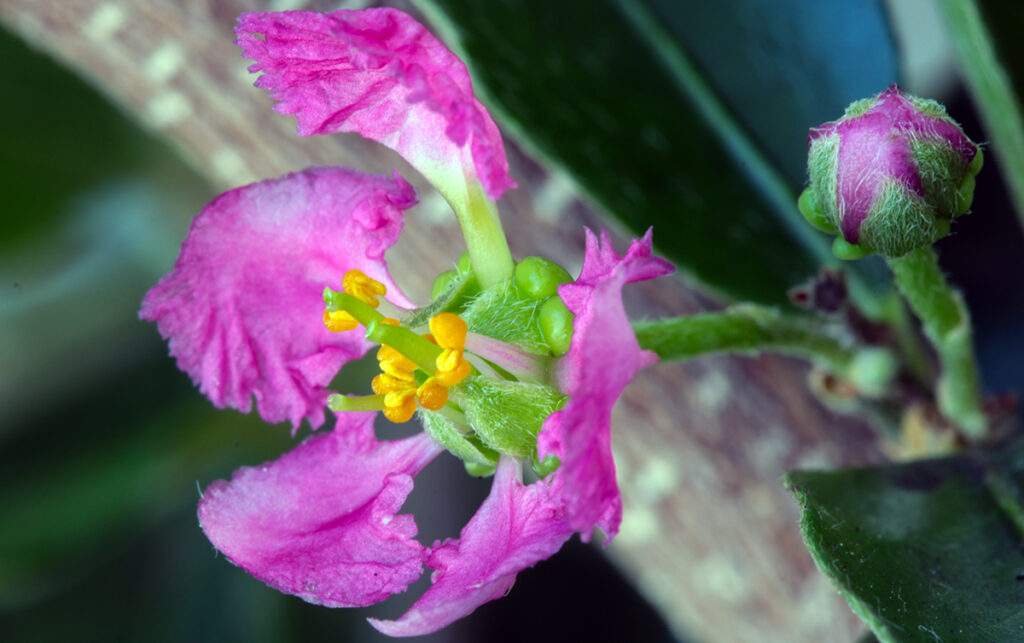
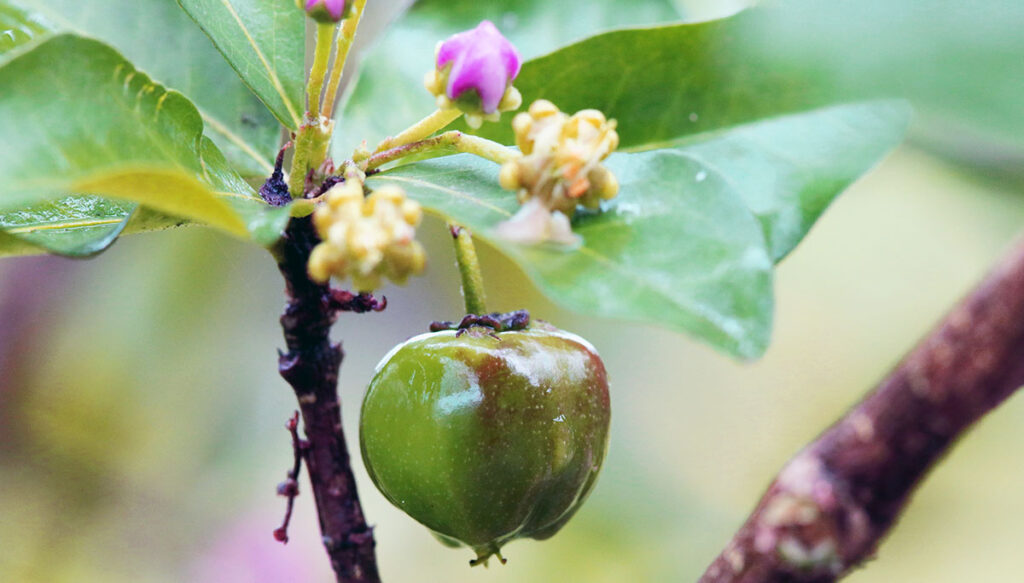

The flowers are pollinated by bees, so if you have beehives near the trees, the production will be much higher. Regarding the season, it varies depending on weather conditions, but typically in Florida, Bahamas, Puerto Rico, and Hawaii, there is a major flowering in April and May, followed by less abundant flowerings that continue until the end of the year.
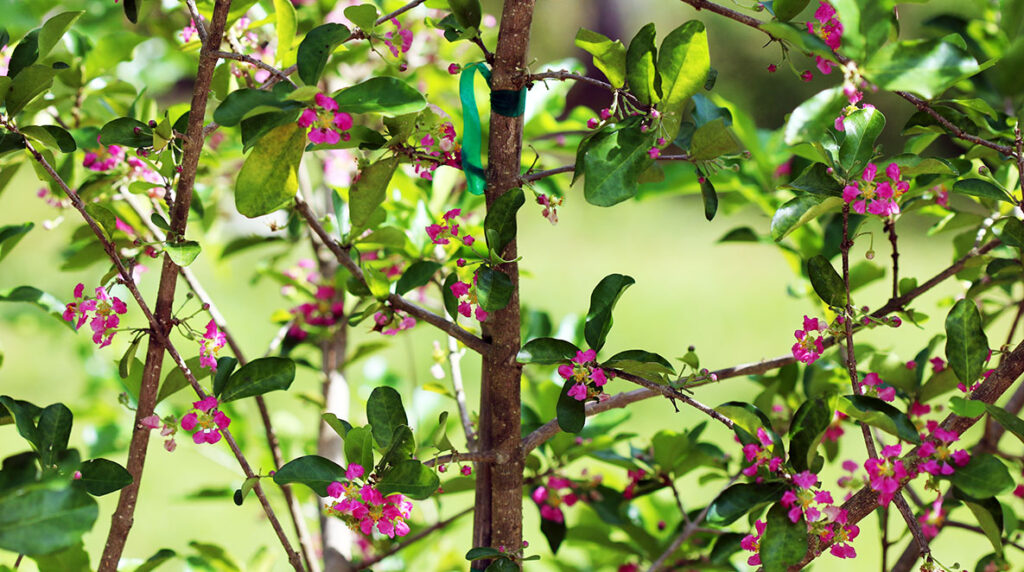
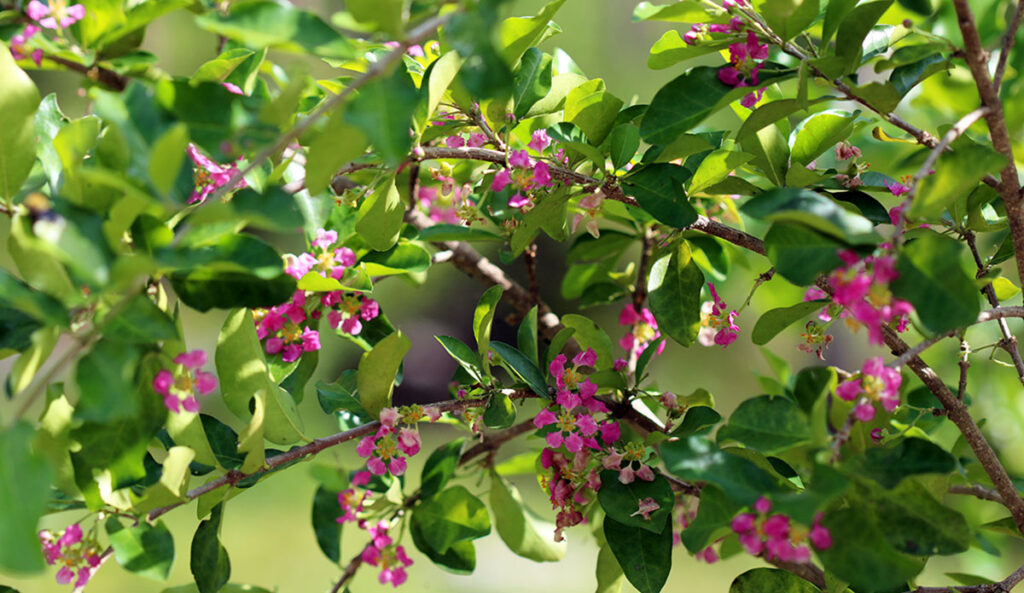
Well, here I finish. I hope you’ve enjoyed everything we’ve talked about regarding barbados cherry. If reading this post inspired you to cultivate your own tree and learn more about this fruit, or if you were already familiar with it in some way, I would greatly appreciate it if you left a comment sharing your experience or enriching this article with something you already know.
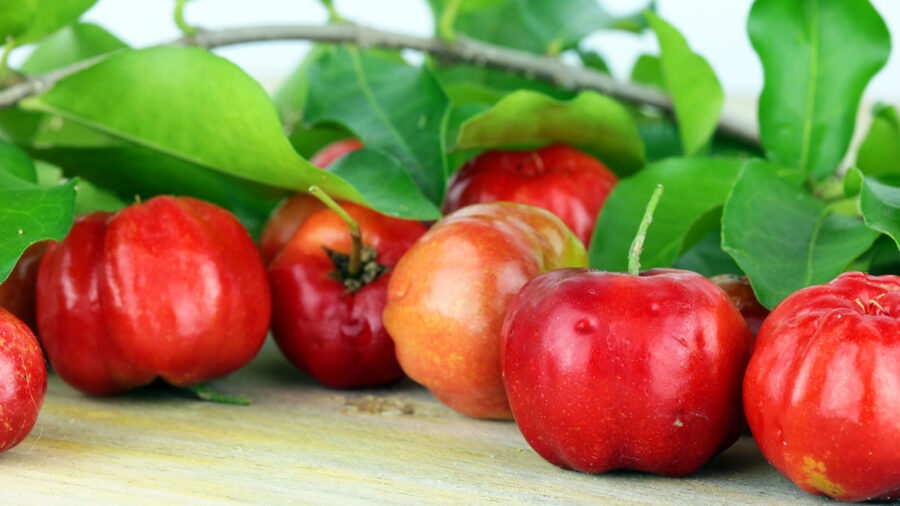

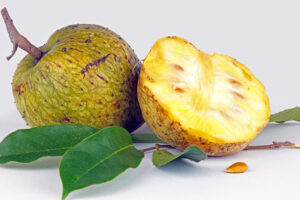
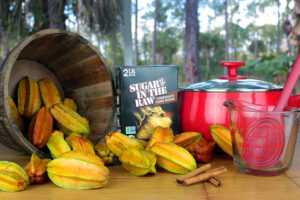
Leave a Reply
Your email is safe with us.